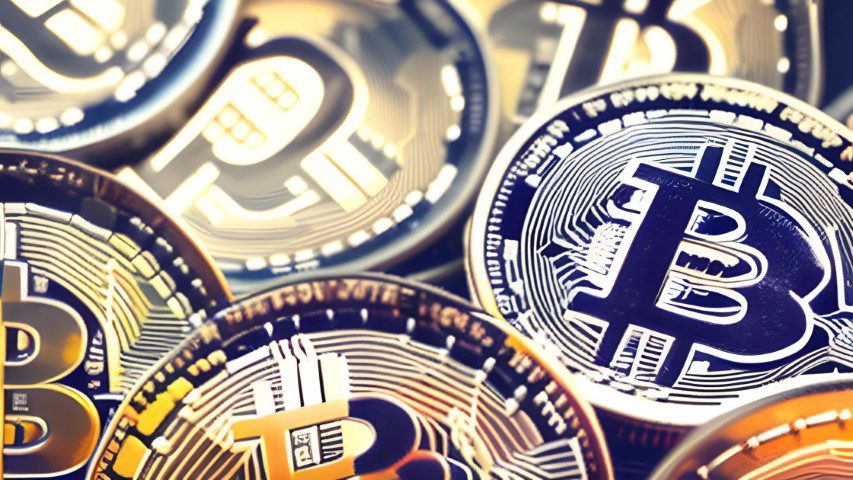Digital Currency in India: A Paradigm Shift in the Financial Landscape
In recent years, the global financial landscape has been witnessing a remarkable transformation, and India is not lagging behind. The concept of digital currency has gained significant traction, sparking discussions about its implications, benefits, and challenges within the country. This article dives deep into the world of digital currency in India, exploring its nuances, regulatory framework, adoption challenges, and future potential.
Digital currency in India
1. Understanding Digital Currency in India: What’s the Buzz All About?
In an increasingly digital world, the idea of a currency that exists purely in electronic form has captured the imagination of individuals, businesses, and governments alike. Digital currency, often synonymous with cryptocurrencies like Bitcoin and Ethereum, represents a paradigm shift in the way we perceive and engage with money.
1.1 The Decentralized Nature
One of the most captivating aspects of digital currency is its decentralized nature. Unlike traditional currencies that are regulated by central banks and governments, digital currencies operate on decentralized networks using cutting-edge technologies like blockchain. This decentralization eliminates the need for intermediaries, such as banks, in financial transactions.
1.2 A New Era of Financial Inclusion
Digital currency has the potential to democratize access to financial services. In countries like India, where a significant portion of the population remains unbanked or underbanked, digital currency could offer an avenue for these individuals to participate in the global economy. All that’s required is an internet connection, providing access to a world of financial possibilities.
1.3 The Promise of Security
Security is a paramount concern in the realm of finance. Digital currency leverages cryptography and advanced security protocols to ensure the integrity and privacy of transactions. The use of blockchain technology, which involves recording transactions in an immutable and transparent ledger, adds an extra layer of security against fraud and manipulation.
1.4 Beyond Borders: Borderless Transactions
Traditional currency transactions often involve time-consuming processes and fees, especially when crossing international borders. Digital currencies have the potential to facilitate seamless cross-border transactions, enabling individuals and businesses to send and receive funds across the globe without the need for intermediaries or currency conversion.
1.5 Investment and Innovation
The allure of potentially high returns has attracted a wave of investors to the world of digital currency. Cryptocurrencies like Bitcoin have gained attention not only as a means of transaction but also as investment vehicles. This surge in interest has led to a flurry of innovation, as developers explore new use cases for blockchain technology beyond currency.
1.6 The Challenge of Regulation
While the possibilities are exciting, the rapid rise of digital currencies has also posed regulatory challenges. Governments around the world, including India, are grappling with how to strike a balance between fostering innovation and safeguarding against potential misuse, such as money laundering and tax evasion.
1.7 Shaping the Financial Landscape
In essence, digital currency is reshaping the financial landscape as we know it. Its disruptive potential spans industries and sectors, from finance to supply chain management. As technology continues to evolve and governments refine their approach to regulation, the full extent of digital currency’s impact is yet to be fully realized.
1.8 Concluding Thoughts
The buzz surrounding digital currency is not unwarranted. It represents a fundamental shift in how we perceive and interact with money, offering possibilities that extend far beyond simple transactions. As individuals, businesses, and governments navigate this new terrain, the question is not whether digital currency will become a defining feature of the financial landscape, but rather how it will transform it.
2. The Indian Government’s Perspective: Opportunities and Concerns
The Indian government has displayed a spectrum of reactions to digital currency. While recognizing its potential to revolutionize financial transactions and enhance financial inclusion, concerns about security, money laundering, and tax evasion have also been raised.
2.1 Embracing the Blockchain Technology
The rise of digital currency has brought with it a powerful technological innovation: blockchain. Beyond its association with cryptocurrencies, blockchain technology has garnered attention for its potential to revolutionize processes across industries. Let’s explore why embracing blockchain technology is crucial and the ways it could reshape various sectors.
2.1.1 Ensuring Transparency and Security
At the core of blockchain technology lies its ability to ensure transparency and security in transactions. Traditional financial systems often involve multiple intermediaries, increasing the risk of errors, fraud, and lack of transparency. Blockchain, on the other hand, employs a decentralized and immutable ledger, where transactions are recorded and verified by a network of participants. This not only reduces the likelihood of errors but also enhances the security of transactions.
2.1.2 Supply Chain Management
Blockchain’s potential extends beyond finance. In supply chain management, for instance, it could transform the way goods are tracked and authenticated. Each step in the supply chain could be recorded on the blockchain, providing an unbroken chain of custody. This transparency could help prevent counterfeiting, improve traceability, and ensure the authenticity of products.
2.1.3 Healthcare and Medical Records
In the healthcare sector, blockchain could address the challenges of data security and interoperability. Patient records, medical histories, and treatment plans could be securely stored on a blockchain, accessible to authorized parties while maintaining patient privacy. This could lead to more coordinated and efficient healthcare services.
2.1.4 Land and Property Ownership
Land records and property ownership have historically been susceptible to disputes and fraudulent practices. Blockchain’s decentralized nature could revolutionize land registries by providing a tamper-proof record of ownership transfers. This could lead to greater transparency, reduced disputes, and more efficient property transactions.
2.1.5 Smart Contracts
Blockchain technology enables the creation of smart contracts, which are self-executing agreements with predefined conditions. These contracts can automate processes, reducing the need for intermediaries and enhancing efficiency. For instance, insurance claims could be processed automatically when predefined conditions are met, streamlining the claims process.
2.1.6 Financial Inclusion
Blockchain technology could play a pivotal role in advancing financial inclusion, particularly in regions with limited access to traditional banking services. With a smartphone and internet connection, individuals can access financial services, make transactions, and manage assets through blockchain-based platforms.
2.1.7 Intellectual Property Protection
Protecting intellectual property is a challenge in the digital age. Blockchain could establish a secure and immutable record of intellectual property rights, making it easier for creators to prove ownership and prevent unauthorized use or infringement.
2.1.8 Concluding Thoughts
Embracing blockchain technology goes beyond the realm of digital currency; it’s about reimagining processes and systems across industries. Its potential to enhance security, transparency, and efficiency has captured the attention of innovators and policymakers alike. As this technology continues to evolve, its impact on various sectors could be transformative, ushering in a new era of trust and collaboration.
Digital currency in India
2.2 Regulatory Dilemma: To Ban or Not to Ban
The rapid proliferation of digital currency has presented governments around the world, including India, with a complex regulatory puzzle. At the heart of this puzzle lies a critical question: Should digital currencies be banned altogether, or should they be regulated in a way that fosters innovation while addressing potential risks?
2.2.1 The Case for a Ban
Proponents of a complete ban on digital currencies often highlight concerns related to financial stability, consumer protection, and illegal activities. They argue that the decentralized and pseudonymous nature of many cryptocurrencies could facilitate money laundering, tax evasion, and other criminal activities. Additionally, the extreme volatility of some digital currencies could lead to financial instability, affecting both investors and the broader economy.
2.2.2 The Case for Regulation
On the other side of the spectrum, advocates for regulation argue that a blanket ban could stifle innovation and hinder the potential benefits that digital currencies and blockchain technology offer. Regulating digital currencies, they contend, could create a framework that safeguards against illicit activities while allowing legitimate use cases to flourish. Moreover, proper regulation could enhance investor protection, ensure market integrity, and provide clarity for businesses operating in the digital currency space.
2.2.3 Striking a Delicate Balance
The challenge lies in striking a balance that addresses concerns without stifling innovation. Implementing overly restrictive regulations could lead to a migration of digital currency activities to jurisdictions with more favorable frameworks, potentially causing India to miss out on technological advancements and economic opportunities. Conversely, a lack of regulations could expose consumers and investors to risks without legal recourse.
2.2.4 International Perspectives
The regulatory approach toward digital currencies varies widely from country to country. Some nations have embraced digital currencies and blockchain technology, fostering innovation and attracting investments. Others have taken a cautious stance, implementing stringent regulations to mitigate risks. India’s regulatory approach will likely be influenced by international trends and the evolving global landscape of digital currency regulations.
2.2.5 Toward a Balanced Future
The regulatory dilemma is complex and multifaceted, requiring careful consideration of various stakeholders’ interests. Striking a balanced approach that encourages innovation, protects consumers, and addresses potential risks will be pivotal in shaping India’s digital currency landscape. Policymakers must navigate this uncharted territory with a forward-looking perspective, embracing the transformative potential of digital currency while safeguarding the nation’s financial stability and security.
2.2.6 Concluding Thoughts
The question of whether to ban or regulate digital currencies is not merely a regulatory challenge but also a philosophical one. India’s decision will have far-reaching consequences, influencing the pace of technological advancement, financial inclusion, and economic growth. As the regulatory debate continues, finding the middle ground that harnesses the benefits of digital currency while mitigating its risks will be essential for shaping a prosperous and innovative future.
3. Digital Currency Adoption: Hurdles on the Path
While the potential benefits of digital currency are undeniable, there are several significant hurdles that need to be overcome before widespread adoption can take place in India.
3.1 Technological Accessibility and Literacy
A significant portion of India’s population still lacks access to basic technological infrastructure, such as reliable internet connectivity and smartphones. Without these tools, participation in the digital currency ecosystem becomes challenging. Moreover, digital literacy remains a concern, as many individuals may not be familiar with the intricacies of digital transactions and the security measures required to safeguard their digital assets.
3.2 Volatility Concerns
The extreme volatility of many digital currencies can deter potential users from embracing them. The value of some cryptocurrencies can fluctuate dramatically over short periods, leading to uncertainty and hesitancy among individuals and businesses. Overcoming this hurdle requires stability mechanisms, education about the nature of digital currency markets, and the development of less volatile options.
3.3 Security and Fraud
Ensuring the security of digital transactions is a critical challenge. Cybersecurity threats, hacking incidents, and phishing attacks can compromise individuals’ funds and personal information. Building a robust security infrastructure and educating users about best practices for digital asset management is essential to building trust in the digital currency ecosystem.
3.4 Regulatory Ambiguity
Uncertainty about the regulatory landscape for digital currencies can deter potential users and investors. People are often wary of engaging with technologies that might later be subject to stringent regulations or restrictions. Clear and consistent regulations that strike a balance between innovation and security can help alleviate these concerns.
3.5 Lack of Consumer Protection
In traditional financial systems, consumers benefit from regulatory bodies that oversee and protect their interests. In the realm of digital currency, these protections may be limited, exposing individuals to potential risks. Establishing mechanisms for consumer protection, dispute resolution, and fraud prevention is crucial to fostering trust in the digital currency ecosystem.
3.6 Infrastructure and Scalability
For digital currencies to be widely adopted, the underlying technology must be able to handle a high volume of transactions efficiently. Scalability issues, where networks become congested during peak usage, can lead to slow transaction times and increased fees. Developing and implementing scalable solutions is essential to accommodate a larger user base.
3.7 Cultural and Psychological Factors
Change often meets resistance due to cultural and psychological factors. Many individuals are accustomed to traditional forms of money and might be hesitant to shift to a completely digital form. Overcoming these perceptions requires education campaigns, awareness programs, and gradually introducing digital currency in a way that aligns with existing financial behaviors.
3.8 Concluding Thoughts
The path to widespread digital currency adoption in India is rife with challenges, but these challenges are not insurmountable. By addressing issues of accessibility, security, regulation, and education, India can lay the groundwork for a future where digital currency is an inclusive and empowering tool for financial transactions. As the nation navigates these hurdles, collaboration between government, industry players, and civil society will be essential to build a resilient and forward-looking digital financial ecosystem.
4. Navigating Toward a Digital Rupee: The Road Ahead
4.1 Central Bank Digital Currency (CBDC)
As the world moves towards a digital future, central banks are exploring the idea of introducing their own digital currencies to complement traditional physical cash. Central Bank Digital Currency (CBDC) represents a digital version of a country’s official currency issued and regulated by its central bank. In the case of India, the Reserve Bank of India (RBI) has been actively considering the implementation of a CBDC.
4.1.1 Benefits of CBDC
- Efficiency and Security
CBDC offers the potential for faster and more efficient transactions compared to traditional banking systems. Payments and transfers could occur in real time, reducing settlement times and associated costs. Additionally, CBDC transactions could be highly secure, leveraging advanced cryptographic techniques and the transparency of blockchain technology.
- Financial Inclusion
CBDC could play a pivotal role in advancing financial inclusion, especially in a country as diverse and populous as India. With a CBDC, individuals without access to traditional banking services could have a digital wallet with the central bank, enabling them to participate in the formal financial system and access a wide range of services.
- Reducing Counterfeiting
Physical cash is susceptible to counterfeiting, leading to financial losses and risks to the economy. CBDC, being a digital asset, would eliminate this risk and provide a secure and tamper-proof form of currency.
- Monetary Policy Implementation
CBDC could offer central banks more direct control over monetary policy. The ability to track digital currency transactions in real time could provide insights into economic trends, allowing central banks to implement policies more effectively.
4.1.2 Challenges and Considerations
- Privacy and Surveillance
The introduction of CBDC raises concerns about individual privacy. As digital transactions are inherently traceable, there’s a need to strike a balance between transaction transparency and maintaining user privacy.
- Technological Infrastructure
Implementing a CBDC requires a robust technological infrastructure that can handle high transaction volumes securely and efficiently. Ensuring the scalability and security of such a system is a significant challenge.
- Cybersecurity
A digital currency system would be a prime target for cyberattacks. Securing the CBDC infrastructure against hacking and fraud would be crucial to maintaining public trust.
- Coexistence with Traditional Banking
CBDC’s introduction should not undermine the traditional banking system. Ensuring a smooth coexistence and integration between CBDC and existing financial services is essential.
4.1.3 India’s CBDC Journey
The RBI has been exploring the potential of introducing a digital rupee for several years. A digital rupee could be a game-changer for India, enhancing financial inclusion, reducing reliance on physical cash, and streamlining financial transactions.
The RBI’s approach to CBDC will likely involve extensive research, pilot programs, and collaboration with various stakeholders, including banks, fintech companies, and the public.
4.1.4 Concluding Thoughts
The concept of Central Bank Digital Currency represents a significant shift in how countries manage and transact their official currency. While there are challenges and considerations to address, the potential benefits, from financial inclusion to improved monetary policy implementation, make CBDC a compelling avenue to explore. As India navigates this digital frontier, thoughtful planning, collaboration, and technological innovation will be pivotal in shaping the future of its financial landscape.
4.2 Fostering Innovation and Startups
The emergence of digital currency has catalyzed a wave of innovation and startup activity, presenting India with opportunities to nurture a dynamic ecosystem that thrives on technological advancement and entrepreneurial spirit.
4.2.1 The Innovation Landscape
The integration of digital currency into the financial realm has sparked a reimagining of traditional financial services and models. Startups are seizing the opportunity to create innovative solutions that leverage blockchain technology and digital currencies to enhance payment systems, cross-border transactions, remittances, and even new forms of financial instruments.
4.2.2 Disrupting Traditional Finance
Startups are disrupting the traditional financial ecosystem by offering alternatives to conventional banking services. Peer-to-peer lending platforms, decentralized finance (DeFi) applications, and blockchain-based supply chain financing are just a few examples of how startups are reshaping financial intermediation.
4.2.3 Financial Inclusion and Empowerment
Digital currency startups are addressing financial inclusion by providing services to individuals who are traditionally underserved by banks. These startups are enabling access to financial services, credit, and investments for segments of the population that have been left out of the formal financial system.
4.2.4 Government Support and Investment
Governments and regulatory bodies play a crucial role in fostering innovation and startups in the digital currency space. By providing a conducive regulatory environment, offering grants, funding research, and collaborating with the private sector, governments can encourage the growth of startups and ensure their alignment with national economic goals.
4.2.5 Collaboration with Established Players
Collaboration between startups and established financial institutions can accelerate innovation. Startups often bring agility, fresh perspectives, and technological expertise, while established players offer resources, industry knowledge, and access to a broad customer base.
4.2.6 Challenges and Opportunities
Despite the immense potential, startups in the digital currency space face challenges. These include regulatory uncertainties, cybersecurity threats, and market volatility. However, overcoming these challenges can lead to significant rewards, including increased financial inclusion, job creation, and the establishment of India as a hub for blockchain and digital currency innovation.
4.2.7 Nurturing an Ecosystem
Nurturing a vibrant ecosystem for digital currency startups requires a multi-pronged approach. This includes education and awareness campaigns to familiarize entrepreneurs and the public with digital currency concepts, funding mechanisms to support innovative ideas and initiatives that facilitate collaboration between startups, investors, and regulatory bodies.
4.2.8 Concluding Thoughts
Fostering innovation and startups in the digital currency domain is not only about economic growth; it’s about embracing a new paradigm of financial services and transforming the way people access and manage their money. By providing the right environment and support, India can position itself as a leader in digital currency innovation, driving economic progress and contributing to the global digital transformation.
Digital currency in India
5. Conclusion: Paving the Way for a Digital Financial Revolution
The evolution of digital currency in India represents more than just a technological advancement; it symbolizes a fundamental shift in how financial transactions are conducted, understood, and regulated. As we’ve explored various facets of digital currency, it becomes evident that its impact goes beyond monetary transactions—it touches upon inclusivity, innovation, security, and the very nature of the financial ecosystem.
5.1 Transforming Financial Transactions
The advent of digital currency offers a glimpse into a future where transactions are no longer bound by geographical boundaries or traditional banking hours. With a smartphone and an internet connection, individuals can engage in financial activities seamlessly, be it sending money to a family member in a remote village or investing in global markets.
5.2 Enhancing Financial Inclusion
Digital currency has the power to empower millions who have been excluded from formal financial systems. By providing a digital gateway to financial services, even the unbanked and underbanked populations can access credit, savings, and investment opportunities that were once out of reach.
5.3 Fostering Innovation and Startups
The digital currency landscape has ignited a spark of innovation, giving rise to startups that are pushing the boundaries of what’s possible in the financial realm. From blockchain-based supply chain solutions to decentralized lending platforms, these startups are creating pathways to efficiency, transparency, and accessibility.
5.4 Regulatory Balancing Act
Regulation is a critical component of ensuring that digital currency realizes its potential while mitigating risks. Striking the right balance between fostering innovation and protecting consumers requires careful consideration and collaboration between policymakers, industry players, and the public.
5.5 Navigating Challenges with Resolve
While the path to full-scale adoption is not without its challenges—technological, cultural, and regulatory—India’s journey into the digital currency realm is marked by resilience and determination. Overcoming these challenges will require collective efforts, education, and a proactive approach to security and policy formulation.
5.6 Shaping the Future
As India stands at the intersection of tradition and transformation, it has an opportunity to lead the digital financial revolution. By embracing digital currency, India can not only modernize its financial systems but also position itself as a global hub for technological innovation, entrepreneurship, and financial inclusion.
The journey into the world of digital currency in India is not just a technological narrative—it’s a story of empowerment, innovation, and nation-building. As we look ahead, it’s clear that the choices made today will shape the financial landscape for generations to come. By navigating the complexities, embracing opportunities, and fostering a culture of inclusivity and innovation, India is poised to redefine its financial future and leave an indelible mark on the global stage.
Frequently Asked Questions
1. Is digital currency legal in India? Yes, digital currency is legal in India. However, its regulatory framework is still evolving.
2. What is blockchain technology? Blockchain technology is a decentralized and secure way of recording transactions across multiple computers. It forms the foundation for many digital currencies.
3. How can I buy digital currency in India? You can buy digital currency through online exchanges that allow trading in cryptocurrencies.
4. What is the potential impact of a digital rupee? A digital rupee can streamline financial transactions, promote financial inclusion, and enhance transparency in the economy.
5. Are there risks associated with investing in digital currencies? Yes, investing in digital currencies comes with risks due to their volatile nature. It’s essential to research and understand the market before investing.
Read our other blogs




1 thought on “Digital Currency in India: A Paradigm Shift in the Financial Landscape”